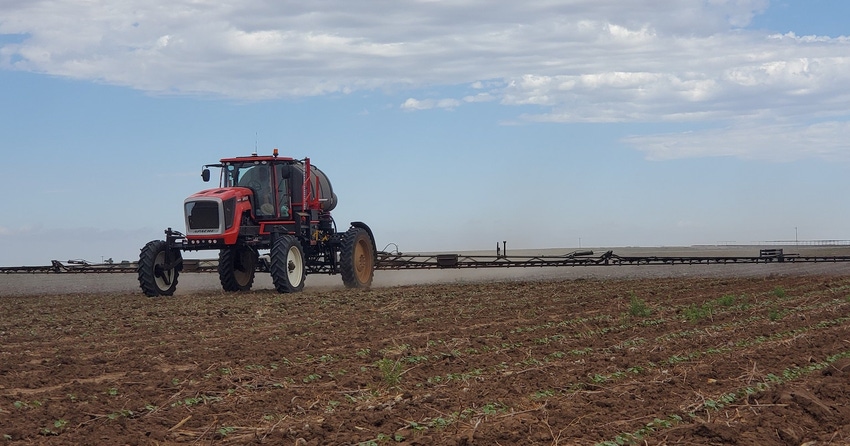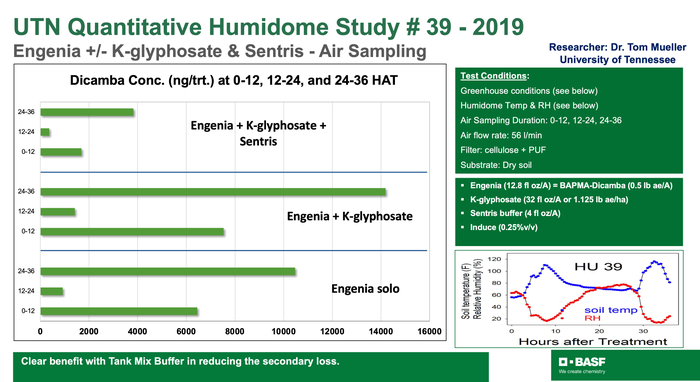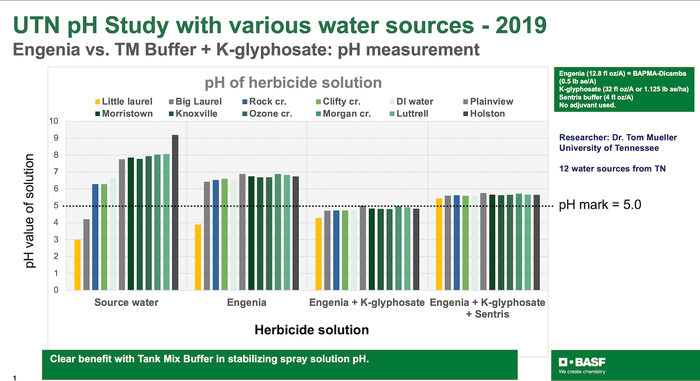
In an effort to manage off-site movement of over-the-top dicamba products, the 2021 label is requiring an approved Volatility Reduction Agent (VRA) be tank mixed with OTT dicamba products prior to application. The two products currently approved are BASF’s Sentris Buffering Technology and Bayer’s VaporGrip Xtra Agent, although experts expect additional VRAs will soon receive approval.
When we interviewed four Midsouth Extension specialists about the new VRAs shortly after the EPA announced the 2021-2025 dicamba label, none had tested the agents specifically for volatility reduction. However, the University of Tennessee Institute of Agriculture just released data from a volatility study evaluating one of the products, Sentris, and the results are promising.
“These initial evaluations have shown a clear benefit of reducing dicamba loss through volatilization,” said Larry Steckel, professor and Extension Weed Specialist with the University of Tennessee Institute of Agriculture.
UTIA’s quantitative humidome study was conducted by Tom Mueller, professor in the UTIA’s Department of Plant Sciences. The results from Mueller’s research suggest Sentris can decrease dicamba volatilization by about 70% in the first 36 hours after application using an Engenia + glyphosate tank mix. Steckel says Sentris was the only VRA to which the university was allowed access for the study.
“We cannot speak for the other VRAs as we have no data, but the take home from these studies is that Sentris can help mitigate dicamba volatility and thus off-target dicamba applications,” Steckel said.

Why pH matters
“In the previous labels there was some wording on keeping the pH of the spray tank solution above 5,” Steckel said. “The reason for this is that when the pH of the spray tank solution drops below 5.0, it can increase the likelihood that dicamba will volatilize into a gas hours after application.”
In previous research, Mueller and Steckel found that maintaining a dicamba solution with a pH above 5.0 was almost impossible when glyphosate was added to the tank mix. Even when starting with a water source with a very high pH, the addition of glyphosate to the tank mix consistently dropped the pH of the spray solution below 5.0.
Mueller’s latest study evaluated herbicide solutions with 12 different source water pH levels that ranged from 3.0 to just over 9.0. When Engenia and glyphosate were added, pH levels of 11 of the 12 herbicide solutions dipped below the 5.0 mark. When Sentris was added to the herbicide solutions, all rose above the 5.0 pH level.
“Based on this research, of all the new label changes that aim to keep herbicide in the target field, adding Sentris could be the most impactful,” Steckel said.

About the Author(s)
You May Also Like






